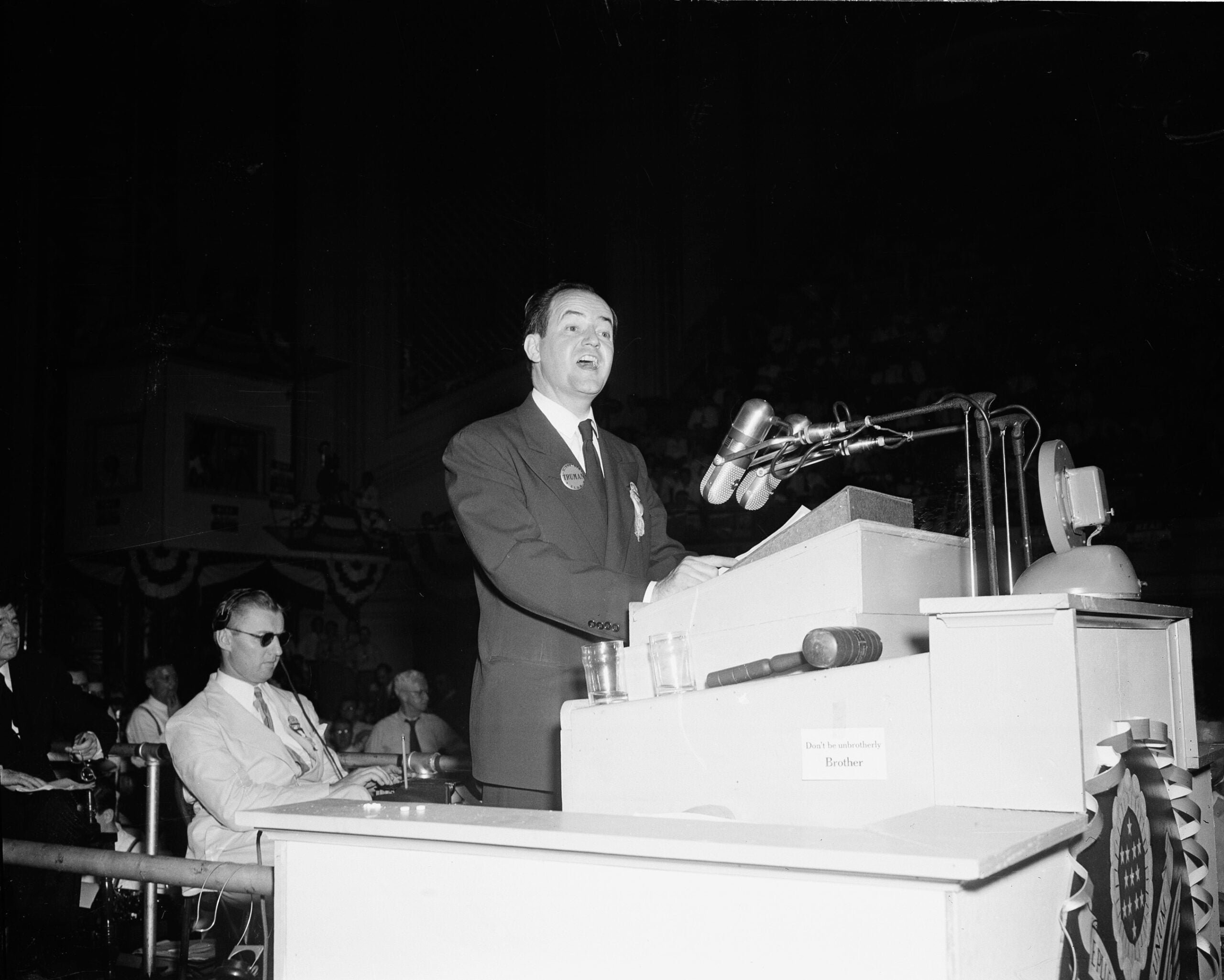For states along the belt-line, jobs have come and gone as factory production decreased or shifted to different locations. We take a look at the cities who’ve managed to have a thriving job economy throughout the changing demands of the economy. We also discuss this week’s state news and the lawsuit several fair housing groups are launching against the United States Housing and Urban Development Department.
Featured in this Show
-
State News Roundup For May 11, 2018
State Senator Lena Taylor was removed from the legislature’s Joint Finance Committee after reports that she retaliated against an employee for using medical leave. We discuss the move, and we look into a “smart cities” initiative in Wisconsin backed by Foxconn. Plus, we remember Ray Szmanda, the “Menards Guy.”
-
What We Can Learn From Rust-Belt Cities That Are Doing Well
With the loss of manufacturing jobs hitting the Rust Belt particularly hard, we discuss what lessons can be learned from Rust-Belt cities that have learned to adapt to a changing economy.
-
Lawsuit Against HUD Highlights Lasting Housing Segregation In Wisconsin
The U.S. Department of Housing and Urban Development has found itself at the center of a legal fight with civil rights groups over an Obama-era rule aimed at desegregating housing.
With Milwaukee’s often cited “most segregated city in the country” status, fair housing advocates in Wisconsin look to bring more attention to the issue.

The Brookings Institute“Milwaukee has the rather appalling distinction of being perhaps the single-most racially segregated metropolitan area in the entire country between whites and African-Americans,” said Erika Sanders, director of program services at Metropolitan Milwaukee Fair Housing Council.
And on top of that, Milwaukee has the lowest suburbanization rate for African-Americans of any metro area of its size in the nation, she said.

Dustin A. Cable, University of Virginia, Weldon Cooper Center for Public Service, Reference Data by Stamen Design.The lawsuit, filed May 8 by the National Fair Housing Alliance, claims HUD illegally suspended a 2015 federal rule requiring local and state governments to submit fair housing assessments in order to receive HUD funding.
The Affirmatively Furthering Fair Housing rule was an effort to further the Fair Housing Act and hold communities accountable in identifying and breaking down obstacles to fair housing, said Bill Tisdale, president and CEO of Metropolitan Milwaukee Fair Housing Council.
It was created after changes to the Fair Housing Act were recommended by the U.S. Government Accountability Office and HUD itself to ensure communities were properly addressing racial segregation and discrimination.
“The premise of the suit is that they have an obligation,” Tisdale said. “If you’re receiving federal funds, you have an obligation to proactively identify impediments and obstacles to fair housing within your communities.“
HUD Secretary Ben Carson delayed implementation of the rule for at least five years in January. He called it a “failed socialist experiment of the 1980s” in a 2015 op-ed in the Washington Times.
Arguments from leaders of HUD center around the bureaucratic hurdles local communities face in having to spend time and resources producing the required reports.
It’s an argument Tisdale calls ridiculous.
“When Secretary Carson in particular talks about getting pushback regarding the expense and complexity of implementing these rules, that’s hard for me to understand,” Tisdale said. “There’s nothing more expensive than residential segregation.”
Where you live determines where you work, your quality of life, educational opportunities and your health care options to name a few, Tisdale said.
Studies show that people of all races indicate they would prefer to live in integrated neighborhoods, although white respondents prefer a lower level of integration.
When asked whether segregation occurs naturally and integrated neighborhoods are idealistic, Tisdale argues that the “birds of a feather flock together” sentiment doesn’t paint the full picture.
“Be clear that fair housing is not putting people in places, but offering the opportunity that they make the place as to where they live,” he said.
Sanders echoes Tisdale’s thoughts. In Wisconsin, and nationally, residential segregation was encouraged by both public and private actors, she said.
That legacy was carried on through the Federal Housing Administration, the prevalence of lending to white GIs over African-American GIs following World War II, racial discrimination in home deeds and illegal housing discrimination, she said.
“Because segregation was deliberately created, we need to undertake deliberate proactive steps to undo it,” she said. “And that’s what the Affirmatively Furthering Fair Housing rule was intended to do. And that’s why it’s so deeply concerning that it’s at risk today.”
Economic repercussions from those policies can be felt steeply, Sanders said. The mean family income among African-American and Hispanic families has continuously lagged that of white families.

The Brookings Institute“For people of color who live in segregated communities, there can be terrible costs from segregation,” Sanders said. “That can mean isolation from public resources, public services, job growth and employment and education opportunities that over the last couple of decades have been greater in suburban areas than in the central city.”
Sanders claims residential segregation hasn’t changed much in the last three decades, but what has changed is the more subtle and sophisticated ways it happens today.
“In this day and age … discrimination happens with this smile and someone shaking your hand, as opposed to slamming the door in your face,” she said.
-
Lawsuit Against HUD Shines Light On Lasting Segregation In Housing
Civil rights groups recently announced a lawsuit against the Department Housing and Urban Development, centered on an Obama-era desegregation rule. We talk to two fair housing experts in Wisconsin about the lawsuit, and the lasting issue of segregation in housing.
Episode Credits
- Rob Ferrett Host
- Dean Knetter Producer
- Rachael Vasquez Producer
- Rob Mentzer Guest
- Eduardo Porter Guest
- William Tisdale Guest
- Erika Sanders Guest
Wisconsin Public Radio, © Copyright 2024, Board of Regents of the University of Wisconsin System and Wisconsin Educational Communications Board.



